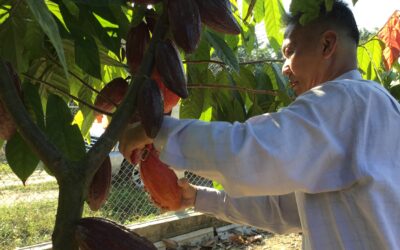Perhaps you might have seen countries proudly announcing their inclusion in the Annex C of the ICCO Agreement throughout the years.
Or you might have recently seen announcements calling for country submissions to the International Cocoa Organization (ICCO) Ad Hoc Panel on Fine Flavour Cocoa which will be meeting on June 13 and 14 in Madagascar.
But what exactly is the Ad Hoc Panel and what is the significance of the Annex C?
LET’S START AT THE VERY BEGINNING…
In 1972, the United Nations organized a Cocoa Conference with the objective of creating an agreement to regulate the cocoa world trade. The International Cocoa Organization (ICCO) was established in 1973 to carry out the objectives and mandates of the Agreement.
Back then, the ICCO Council would establish and adjust annual export quotas for each of its member countries. The ICCO was also responsible for organizing and managing a buffer stock in Europe. Additionally, there were also import limitations for exports from non-member countries.
A list of “fine or flavour” cocoa producing countries was indicated in Annex C of the Agreement. Fine or flavour cocoa producing countries were exempt from the quotas, limitations and obligations of the Agreement. The import and export of fine flavour cocoa could not take place without a control document issued by the ICCO.

THE ICCO FIVE DECADES ON
Since its inception in the 70’s, the ICCO has changed and evolved into an international platform that supports the sustainable development of the global cocoa sector. It now functions within the framework of the 2010 International Cocoa Agreement. The priorities of the ICCO nowadays are defined by their five-year Strategic Action Plan (2019-2024).
The current membership is comprised by 51 countries. The 22 cocoa producing country members represent 92% of the global cocoa exports, while the 29 remaining members represent 80% of the total world cocoa imports. For a comprehensive list of the current members, please visit the ICCO website.
Even though the Annex C is no longer used as a tool to partially or completely exempt countries from export and import regulations and limitations, it is still regarded as a reference for differentiating fine flavour from bulk cocoa.
Women farmers in Ivory Coast, one of the member countries of the ICCO. After 44 years, the ICCO moved its headquarters from London to Abidjan, the political and commercial capital of the world’s biggest cocoa producing country
THE AD HOC PANEL ON FINE FLAVOUR COCOA
The Annex C is reviewed and revised every four years by the ICCO Council. The Council relies on the recommendations of a group of independent experts to revise the list: the Ad Hoc Panel on Fine Flavour Cocoa. The Council will ultimately revise the listing and the proportions of exports based on the recommendations of the Panel.
WHO ARE THE PANEL MEMBERS?
The Panel is selected by the ICCO and is comprised by 12 experts, 6 from importing and 6 from exporting countries. The candidates must have at least 8 years’ experience in one or more of the following areas: grading and quality management; physiology and agronomy; genetics and breeding; research; post-harvest technology and processing; certification; value addition technology; marketing and trade.
THE PROCESS
Each country who wants to be considered as a partial or total exporter of fine flavour cocoa, should submit a dossier with technical information and statistics. The dossier contains information on a diverse range of topics ranging from genetics to history, flavour characteristics, post harvesting processes, international awards or recognitions, export volumes, pricing, processing and marketing.
Each submitting country is given the opportunity to present their case before the panel (in person or online). During the presentation, time is allotted to answer any questions from the Panel members. A deliberation process then takes place during which experts discuss their views based on the information provided as well as their own experiences.
After the deliberations, the Panel will produce their recommendations to the International Cocoa Council (the supreme body of the ICCO) for its approval and adoption.
WHY THE ANNEX C IS STILL RELEVANT AFTER ALL THESE YEARS
As long as the cacao world doesn’t successfully establish universally accepted indicators to differentiate fine flavour from bulk cocoa, documents like the Annex C are a valuable reference to international markets worldwide. Not only does it help to have an idea of the volume of fine flavour cocoa production around the world, it also establishes a reference on standards which are currently being applied to differentiate fine flavour cocoa from bulk.
It is worth noting that as of this year, those countries who do not submit a dossier for the consideration of the Panel will not be included in the Annex C.




